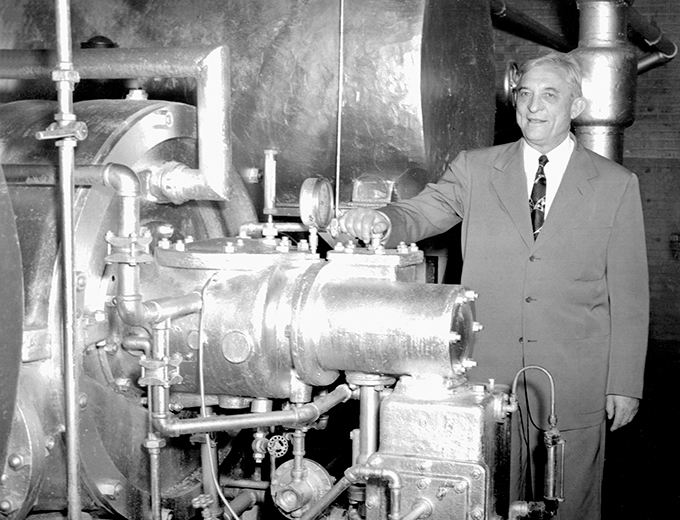As we swelter through some of the hottest days on record, it’s hard not to appreciate the cool relief that air conditioning brings into our lives. But have you ever paused to wonder about the origins of this marvelous invention? From its humble beginnings in 1902, designed by Willis Haviland Carrier to solve a humidity problem in a printing plant, to becoming a staple in homes and workplaces around the globe, air conditioning has a fascinating history.
This technology not only cools but also purifies the air we breathe, making our indoor environments more comfortable and healthier. As we delve into the story of air conditioning, we’ll explore how it has evolved and its profound impact on society, from enabling development in hotter climates to improving productivity in various industries. Join us as we uncover the cool history of air conditioning and peek into its future, where sustainability and innovation promise to take center stage.
What is air conditioning?
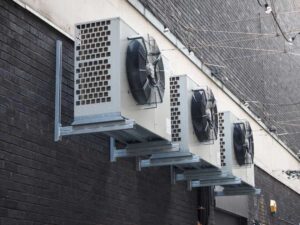
Air conditioning, a technology designed to control and modify the air in an enclosed space, serves the dual purpose of cooling and dehumidifying the air for enhanced comfort and air quality. At its core, the process involves a cycle of refrigeration where warm air is removed and replaced with cooler air, maintaining a consistent, desired temperature. This system not only cools but also filters out pollutants, contributing to a healthier indoor environment.
Originating to improve industrial processes, air conditioning has evolved into a fundamental component of residential and commercial buildings, transforming living and working spaces into comfortable havens irrespective of the external climatic conditions. Its significance extends beyond mere comfort, impacting productivity, preserving the integrity of electronic devices, and even protecting the quality of stored goods. As global temperatures rise, the role of air conditioning as a tool for mitigating the effects of heatwaves and maintaining public health becomes increasingly paramount, highlighting its importance in today’s world.
Who invented air conditioning?
Willis Haviland Carrier, an American engineer, is credited with inventing the first modern air conditioning system in 1902. Carrier’s invention was initially designed to solve a problem at a printing plant in Brooklyn, New York, where excess humidity was causing issues with the printing process. By controlling the humidity, Carrier not only stabilized the paper dimensions and ink alignment but also inadvertently created a system that could provide comfort in indoor spaces.
This breakthrough laid the groundwork for the development of air conditioning technology that has since become integral to homes, workplaces, and industries around the world. Carrier’s work has had a profound impact on modern society, enabling the growth of industries and making it possible for people to live and work comfortably in a wide range of climates.
Willis Haviland Carrier, an American engineer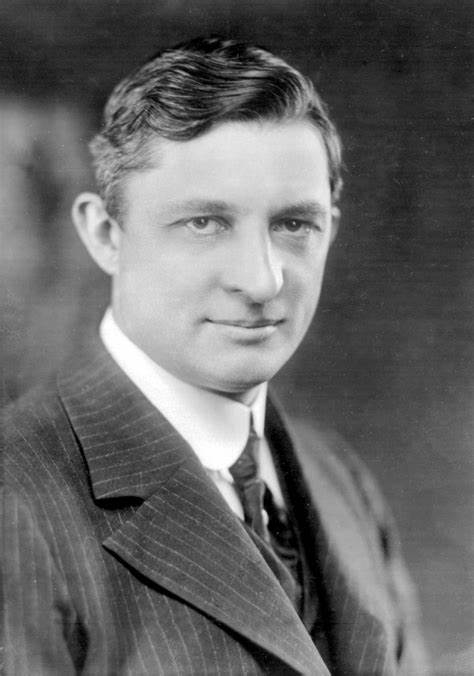
Willis Haviland Carrier, recognized as the father of modern air conditioning, revolutionized how we live, work, and interact. In 1902, Carrier designed the first system capable of not just cooling but also controlling the humidity of indoor air. This innovation was initially intended to solve a specific problem in a Brooklyn printing plant, where humidity was affecting the quality of printed materials.
However, Carrier’s invention quickly transcended its original purpose, laying the foundation for the widespread use of air conditioning in homes, offices, and industries worldwide. Carrier’s work has profoundly influenced modern society, enabling comfortable living and efficient working environments across diverse climates.
When was the first air conditioning system developed?
The first air conditioning system was developed in 1902 by Willis Haviland Carrier. This groundbreaking invention was designed to address humidity issues in a Brooklyn, New York printing plant. Carrier’s system not only controlled the humidity but also significantly improved the air quality and comfort of indoor environments.
This innovation marked the beginning of modern air conditioning technology, which has since become essential in residential, commercial, and industrial settings worldwide. Carrier’s development paved the way for advancements that have made air conditioning systems more efficient, reliable, and accessible to people in various climates and regions.
1902, in Brooklyn, New York
In 1902, Brooklyn, New York, became the birthplace of the first modern air conditioning system, invented by Willis Haviland Carrier. This groundbreaking invention was initially designed to tackle the challenges of humidity control within a printing plant, where fluctuations in moisture levels were detrimental to the printing process. Carrier’s innovative system not only addressed these humidity issues but also laid the foundation for the modern air conditioning technology we rely on today.
This pivotal moment in history significantly enhanced indoor air quality and comfort, paving the way for the global adoption of air conditioning in residential, commercial, and industrial settings.
Why was air conditioning invented?
Air conditioning was invented by Willis Haviland Carrier in 1902 primarily to solve a specific problem: controlling humidity in a Brooklyn printing plant. The fluctuating levels of humidity were causing issues with paper size and ink alignment, affecting the quality of the print. By inventing a system that could stabilize the humidity levels, Carrier not only improved the printing process but also inadvertently created a technology that could enhance comfort and air quality in indoor environments.
This invention laid the groundwork for the modern air conditioning systems that now play a crucial role in homes, workplaces, and industries around the world, providing relief from heat and improving living and working conditions significantly.
To control humidity in a printing plant and stabilize paper size and ink alignment
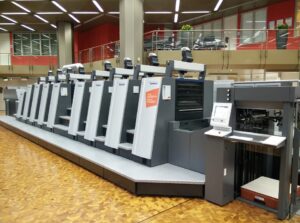
Air conditioning was initially invented to control humidity within a printing plant, a critical need identified by Willis Haviland Carrier. The challenge of high humidity levels caused paper to expand and contract, which in turn, affected the precision of ink alignment on the paper. By introducing a system to regulate the air’s moisture content, Carrier not only solved these specific issues but also set the stage for the broader application of air conditioning technology.
This innovation was pivotal, enhancing the quality and consistency of printed materials, and laying the foundation for the use of air conditioning in various environments to improve comfort and process control.
Also Read: How to Determine Size of Heating and Air Conditioning System
How has air conditioning impacted society?
Air conditioning has profoundly transformed society by improving comfort in homes and workplaces, enabling the development of hot climates, influencing population growth in the American South, and increasing productivity in industries. This technology, initially invented to control humidity for a specific industrial process, has evolved into a critical component of modern life. It has made it possible to maintain comfortable indoor environments year-round, regardless of external temperatures.

Additionally, air conditioning has been instrumental in the economic development of regions that were previously considered too hot for comfortable living or efficient working conditions. The widespread adoption of air conditioning has also played a significant role in demographic shifts, with more people moving to warmer regions, knowing they can enjoy cooled indoor spaces. Moreover, industries that rely on controlled environments for manufacturing processes have seen significant gains in productivity, thanks to the ability to maintain stable temperatures and humidity levels.
The impact of air conditioning on society is vast, touching on aspects of comfort, health, economic development, and lifestyle choices.
Improved comfort in homes and workplaces
Air conditioning has dramatically improved comfort in both residential and commercial settings, allowing for a controlled, pleasant indoor environment regardless of the heat and humidity outside.
Enabled development in hot climates
The advent of air conditioning has enabled development in hot climates, making regions that were once deemed too uncomfortable for large-scale economic activities and habitation now thriving centers of growth and innovation.
Influenced population growth in the American South
Air conditioning has significantly influenced population growth in the American South, turning it into one of the fastest-growing regions in the United States. The ability to cool indoor spaces has made the high temperatures more bearable, attracting individuals and businesses alike.
Increased productivity in industries
The introduction of air conditioning has increased productivity in various industries by creating optimal working conditions. Controlled temperatures and reduced humidity levels lead to more efficient operations and protect sensitive equipment and materials from damage caused by excessive heat or moisture.
What are the types of air conditioning systems?
There are several types of air conditioning systems, each designed to meet specific cooling needs and spatial requirements. Central air conditioners are ideal for whole-house cooling, utilizing a network of ducts to distribute cool air throughout a home or building. Ductless, mini-split air conditioners offer a flexible solution for cooling individual rooms without the need for extensive ductwork, making them perfect for targeted cooling or spaces where traditional ducted systems are impractical.
Window units are a compact, affordable option for single-room cooling, easily installed in most standard windows. Portable units provide flexibility and convenience, allowing users to move the cooling source between rooms as needed. Lastly, evaporative coolers, also known as swamp coolers, are best suited for dry climates, using the evaporation of water to cool the air, offering a more energy-efficient option in suitable environments.
Each of these systems has its advantages, catering to different preferences, building types, and climate conditions.
Central air conditioners for whole-house cooling
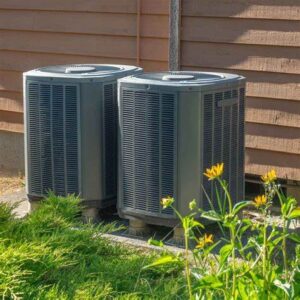
Central air conditioners are designed to cool an entire house or building, utilizing a system of ducts to distribute cool air evenly across different rooms.
Ductless, mini-split air conditioners for individual rooms
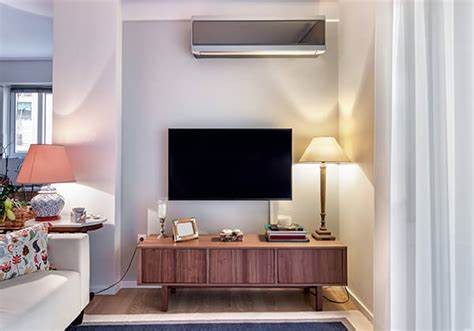
Ductless, mini-split air conditioners provide targeted cooling to individual rooms or spaces without the need for a comprehensive duct system, offering an efficient solution for adding air conditioning to specific areas.
Window units for single room cooling

Window units are a compact and cost-effective option for cooling single rooms. They are easily installed in most window types and are ideal for temporary or supplemental cooling needs.
Portable units for flexibility and convenience

Portable air conditioners offer the ultimate in flexibility, allowing you to move the cooling source to different rooms as needed. They are perfect for spaces where traditional AC installations are not feasible.
Evaporative coolers for dry climates
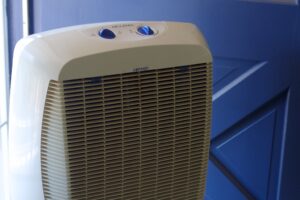
Evaporative coolers, also known as swamp coolers, are best suited for areas with dry climates. They use the natural process of water evaporation to cool the air, providing an energy-efficient cooling option.
Also Read: Central Air Conditioner Types: Find The Perfect Fit For Your Home Or Business
How does air conditioning work?
Air conditioning works by utilizing the refrigeration cycle to remove heat and humidity from indoor air. The core components of this system include a compressor, condenser, expansion valve, and evaporator. The process begins with the compressor raising the pressure and temperature of the refrigerant.
This high-pressure gas then flows through the condenser, where it releases its heat to the outside air and transforms into a cooler liquid. The liquid refrigerant passes through the expansion valve, reducing its pressure and temperature before entering the evaporator. In the evaporator, the refrigerant absorbs heat from the indoor air, cooling it down.
The refrigerant, now a low-pressure gas, returns to the compressor to begin the cycle anew. Meanwhile, a fan circulates the cool air through a system of ducts, spreading comfort throughout the indoor space. This cycle continues until the indoor air reaches the desired temperature, as set on the thermostat.
Uses refrigeration cycle to remove heat and humidity
Air conditioning operates on the refrigeration cycle, a sophisticated process that efficiently extracts heat and humidity from the indoor air, transforming warm, uncomfortable spaces into cool, comfortable environments.
Circulates cool air through a system of ducts
Once the air is cooled, it is then circulated throughout the building or room via a system of ducts, ensuring even distribution and maintaining a consistent, comfortable temperature across different areas.
What are the environmental impacts of air conditioning?

The environmental impacts of air conditioning are significant and multifaceted. Firstly, air conditioning systems consume a considerable amount of energy, which can lead to increased carbon dioxide emissions and contribute to global warming. This is particularly true in regions where the electricity used is generated from fossil fuels.
Additionally, many air conditioning units use refrigerants that, if released into the atmosphere, can be potent greenhouse gases. These refrigerants have the potential to contribute to the depletion of the ozone layer and exacerbate global warming. As the demand for air conditioning continues to grow worldwide, the challenge of mitigating these environmental impacts becomes increasingly important.
Efforts are being made to develop more energy-efficient models and use alternative, eco-friendly refrigerants to lessen the environmental footprint of air conditioning technology.
Contributes to global warming through energy consumption
Air conditioning significantly increases energy consumption, leading to higher carbon dioxide emissions. This surge in energy use contributes to global warming, highlighting the environmental cost of cooling our indoor spaces.
Releases potent greenhouse gases from refrigerants
Many air conditioning systems rely on refrigerants that, if leaked, release potent greenhouse gases into the atmosphere. These emissions can have a far-reaching impact on global warming, underlining the importance of responsible refrigerant management and the development of eco-friendly alternatives.
Future of air conditioning technology
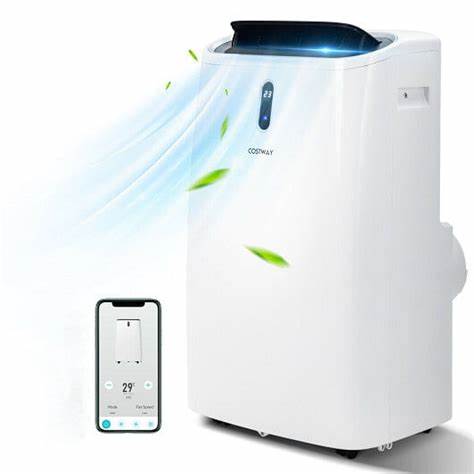
The future of air conditioning technology is poised for innovation, focusing on energy efficiency and environmental sustainability. As global awareness of climate change and environmental impact grows, the demand for air conditioning systems that consume less energy and utilize eco-friendly refrigerants is increasing. Researchers and manufacturers are exploring new technologies, such as thermally driven chillers and desiccant materials, to reduce reliance on traditional electricity and harmful refrigerants.
Additionally, the integration of smart technology into air conditioning systems offers the potential for more precise control over cooling, further reducing energy consumption. The development of energy-efficient models and the use of alternative refrigerants are key areas of focus, aiming to minimize the environmental footprint of air conditioning while maintaining or improving comfort levels. The future of air conditioning technology represents a critical component of broader efforts to address climate change, promising advancements that will enable sustainable cooling solutions for generations to come.
Development of energy-efficient models
The push towards energy-efficient models in air conditioning technology aims to significantly reduce energy consumption. This development is crucial for minimizing the environmental impact of cooling systems while still providing the necessary comfort levels in residential and commercial spaces.
Use of alternative, eco-friendly refrigerants
The use of alternative, eco-friendly refrigerants is a pivotal shift in air conditioning technology. These refrigerants are designed to have a lower global warming potential, helping to reduce the harmful environmental effects associated with traditional refrigerants.
Integration with smart home systems
Integration with smart home systems represents a forward-thinking approach to air conditioning. This integration allows for more precise and automated control over indoor climates, optimizing energy use and enhancing overall comfort through advanced technology.
Also Read: How to Choose Heating and Air Conditioning System
Experience the Next Generation of Air Conditioning with Callidus Air

Air conditioning has evolved from a luxury to a necessity in many parts of the world, significantly improving our quality of life by providing comfort in homes and workplaces. The invention by Willis Haviland Carrier in 1902 has grown into a technology that not only cools but also improves air quality, impacting societal growth, productivity, and health. However, the environmental implications of traditional air conditioning systems, including high energy consumption and greenhouse gas emissions, have prompted a shift towards more sustainable solutions.
The future of air conditioning is focused on energy efficiency, the use of eco-friendly refrigerants, and the integration of smart technology, aiming to reduce the environmental footprint while continuing to offer enhanced comfort. As we move forward, the development and adoption of innovative air conditioning technologies will play a crucial role in addressing climate change and ensuring a sustainable, comfortable living environment for future generations.
At Callidus Air, we’re committed to bringing you the latest in efficient, sustainable air conditioning technology. Our cutting-edge solutions are designed to maximize your comfort while minimizing environmental impact. Whether you’re looking to upgrade your existing system or install a new, state-of-the-art HVAC unit, our team of experts is here to help.

